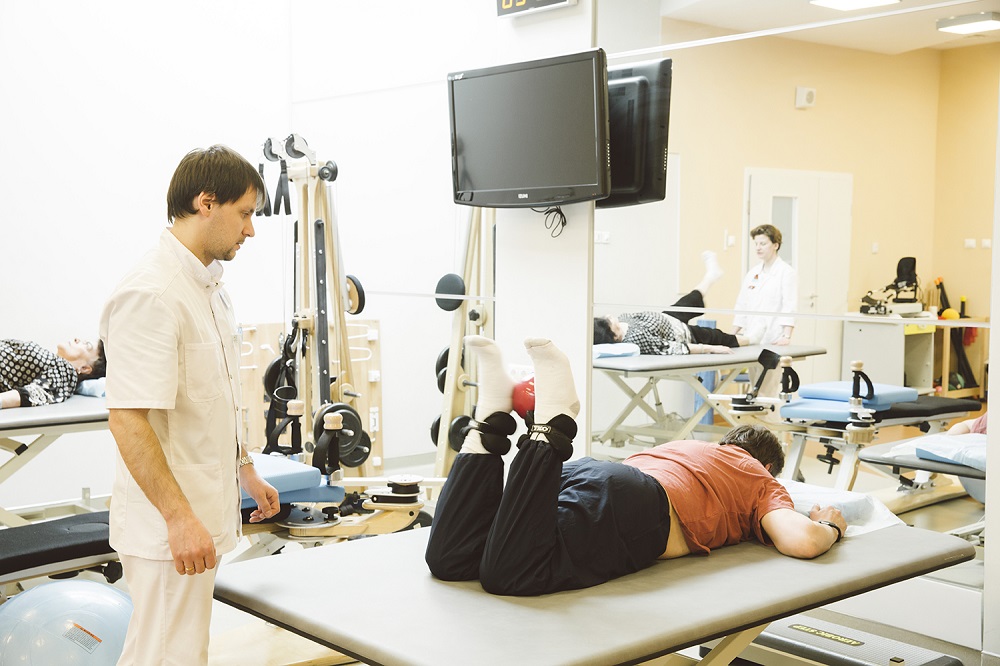
If necessary, it is possible to visit the department of rehabilitation treatment on an outpatient basis.
Rehabilitation physician examination
Tasks:
- strengthening the muscles of the lower extremities;
- increase in the range of motion in the operated joint (strictly according to the recommendations in the patient's discharge summary);
- adaptation of the patient to everyday home physical activity;
- restoration of the support and motor function of the limb;
- increased psycho-emotional state.
Rehabilitation methods:
- therapeutic gymnastics in the gym to strengthen the 4 heads of the thigh muscles, gluteal muscles, active movements in the joints of the limbs. Restrictions in the movement of the hip joint remain for up to 6 weeks from the date of surgery. In the future, a gradual increase in amplitude to subnormal values. Learning to walk with a cane (after consulting an orthopedic traumatologist), training for dynamic balance and functional control over the body, cycling ergometer with a dosed load, learning to walk without additional support, training in correct gait;
- therapeutic exercises in water (in the absence of inflammatory phenomena of the postoperative scar);
- massage of the lower limbs, gluteal region and lumbosacral spine;
- lymphatic drainage massage of the operated limb (in the presence of edema);
- electrostimulation of the 4th head muscles of the thigh, gluteal muscles;
- hydrotherapy;
- acupuncture.
Dynamic observation of a rehabilitation physician.
The course of treatment is 15-20 procedures.
Next, you should continue to perform therapeutic exercises at home.
By the end of the early recovery period, use additional support as needed.
